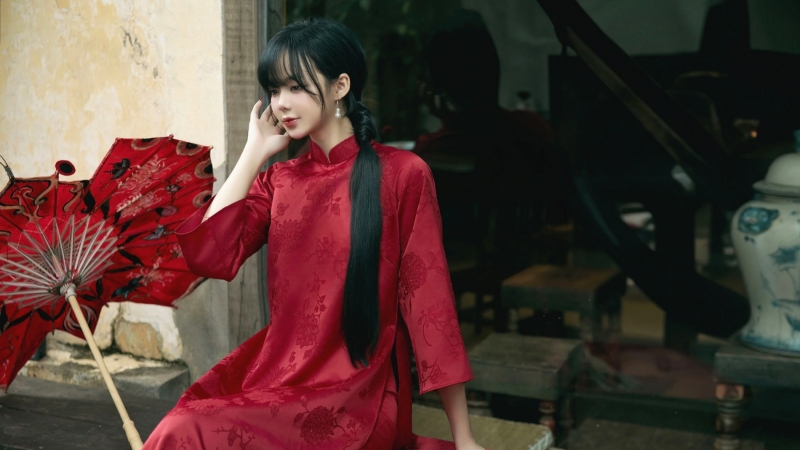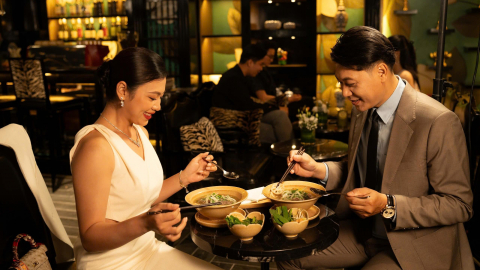The Vietnamese ao dai has long been a symbol of culture, history and national pride. Through many changes over time, the ao dai not only retains its traditional values but also constantly changes to suit the pace of modern life.
The historical journey of the ao dai
Ao dai is not only a costume, but also a mark of Vietnamese history and culture. According to many studies, since the 17th century, Lord Nguyen Phuc Khoat laid the foundation for the current ao dai when he issued regulations on clothing, helping to shape the style of the five-panel ao dai, one of the predecessors of the modern ao dai.
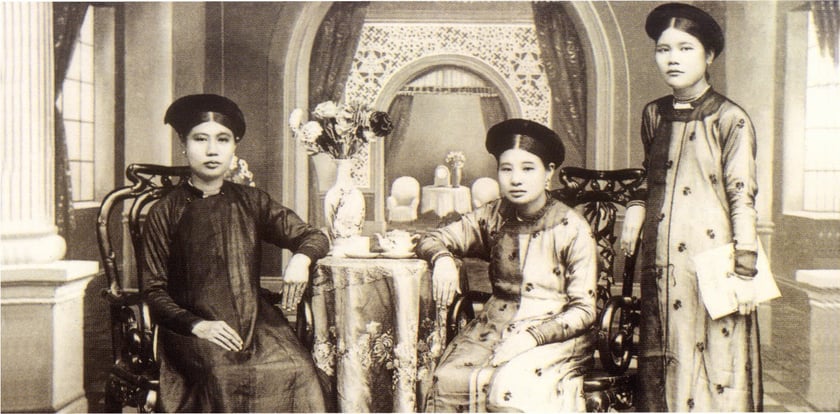
The five-panel ao dai consists of two pieces of fabric sewn together to form a discreet front panel, with a lower panel on the right side. The four outer panels symbolize the four parents, which are one's own parents and the parents of one's loved ones, while the fifth panel symbolizes the wearer. The ao dai always has five buttons to represent the Vietnamese people's moral values of humanity - courtesy - righteousness - wisdom - trustworthiness.
The 20th century marked a major turning point when the ao dai was modernized by painter Cat Tuong (Le Mur) and painter Le Pho. Le Mur's ao dai with its tight design, puffy sleeves and low neckline had a Western feel, while Le Pho's ao dai retained its traditional features with a high neck and soft long skirt. These changes not only made the ao dai more graceful and attractive, but also suited the trends of the times.
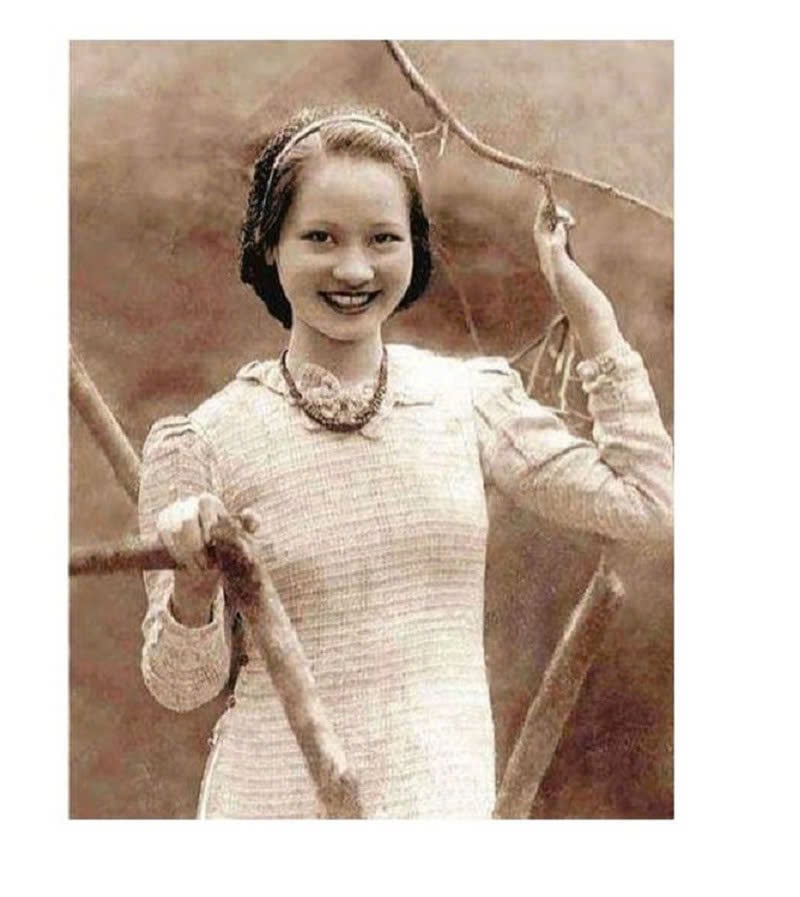
The modern ao dai or Lemur ao dai appeared in the 1930s, designed by artist Nguyen Cat Tuong. He created the style and shape: with collar, without collar, with sleeves, short sleeves, without sleeves, puffed shoulders, flat shoulders, flared cuffs, not flared, with buttons, without buttons, long flaps, short flaps...
The Ao Dai is a harmonious combination of traditional beauty and modern creativity. The traditional Ao Dai with two long, flowing panels, a high, discreet collar, and soft silk material has become a symbol of grace and elegance. Poet Nguyen Sa once wrote:“The Saigon sun makes me feel cool when I walk by / Because you wear a Ha Dong silk shirt”, as a praise for the gentle, delicate beauty of the ao dai.
However, in today's era, the ao dai is not limited to traditional designs. The appearance of modernized ao dai with low necklines, short skirts, or denim and chiffon materials has brought a new breeze, attracting young people. In that flow, there are people who always strive to preserve and promote the beauty of the ao dai, including MC Tung Leo. He shared: "We are not renewing the ao dai, but just making the ao dai more suitable for the times. That is the most accurate phrase."

MC Tung Leo
Preserving the soul of the Ao Dai in the new era
Nowadays, the Ao Dai is no longer just a women’s outfit for special occasions, but is gradually returning to men and is loved by many young people. Modernized Ao Dai designs appear more and more, bringing convenience but still maintaining the original beauty. However, the line between creativity and losing traditional values has also become a matter of concern.
"Instead of designing a modernized ao dai, we are actually designing a modern costume inspired by the ao dai. To call it a real ao dai, we must keep its original form: long skirt, soft lines and the balance of yin and yang in every detail," MC Tung Leo emphasized.
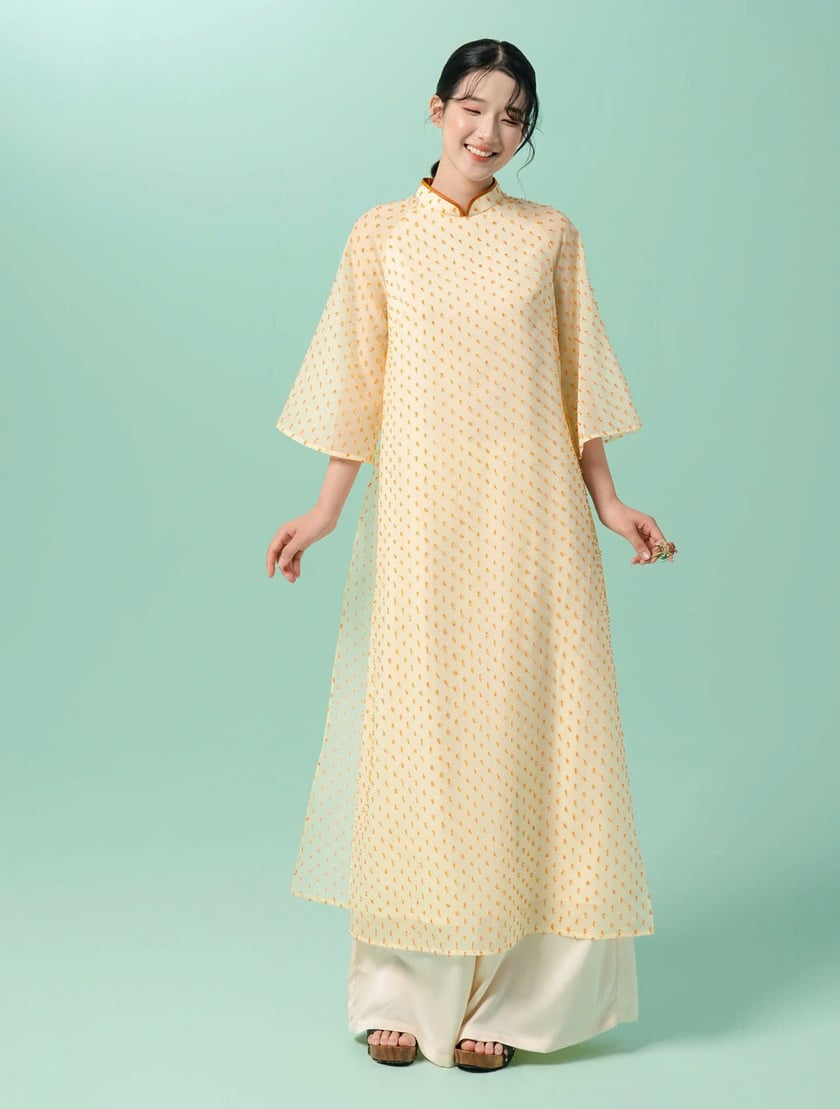
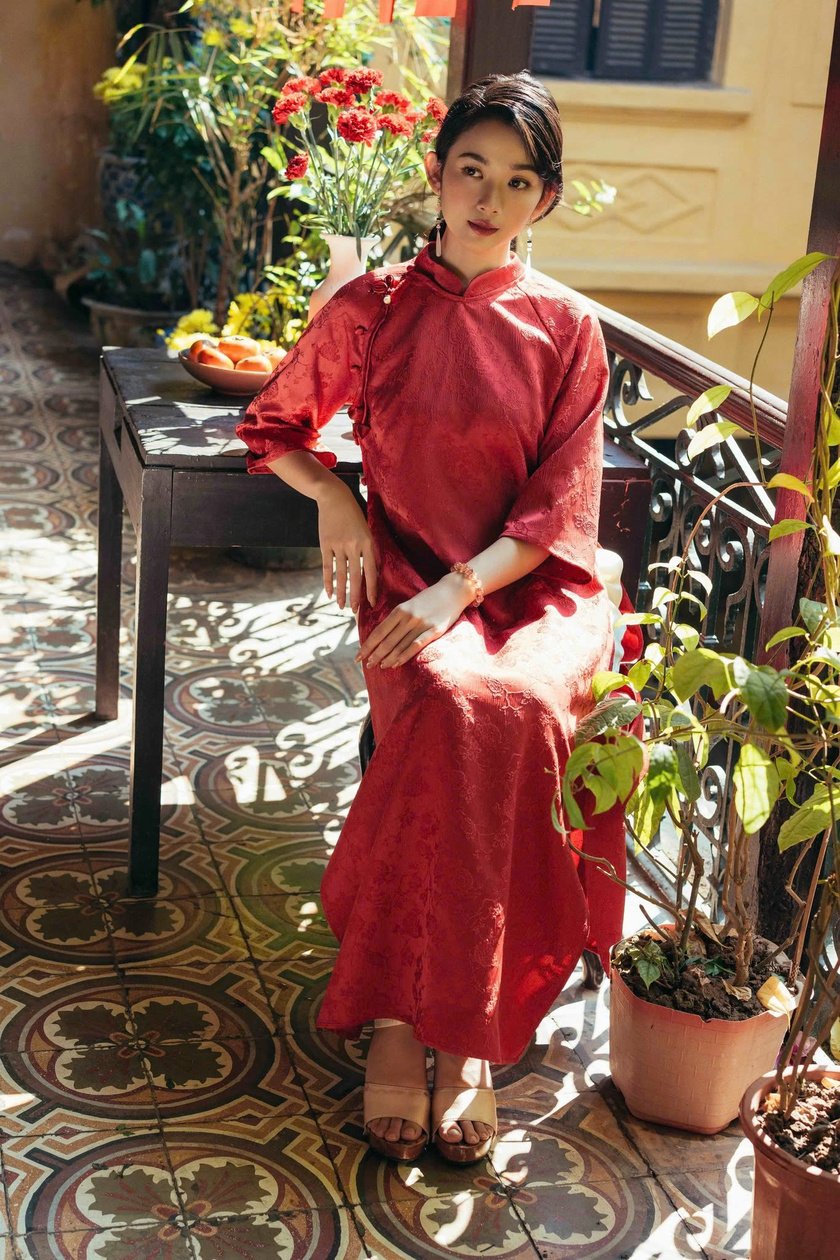
Modernized ao dai designs appear more and more, bringing convenience but still maintaining the original beauty.
In the Vietnamese fashion industry, designers like Si Hoang and Minh Hanh have made important steps in preserving the identity of the ao dai. They not only preserve traditional values but also bring the ao dai closer to young people through unique collections that are imbued with the national spirit but never out of date.

Designer Si Hoang has spent more than 30 years of his career dedicated to and honoring the beauty of the ao dai.
Ao dai and national pride
Every time they see the Ao Dai fluttering on the street, Vietnamese people once again deeply feel the identity of their homeland. Not just a costume, Ao Dai also carries national pride. MC Tung Leo recounted: "When I go abroad and wear the Ao Dai, I feel that I am not simply an individual, but a representative of Vietnamese culture. That feeling is truly sacred."
Therefore, promoting Ao Dai is not only the responsibility of designers or artists but also the common responsibility of everyone. In recent years, the trend of wearing Ao Dai during Tet, at important events or even in daily life is gradually becoming popular. It is not difficult to see images of young people wearing Ao Dai walking on the street, taking pictures, participating in festivals. This shows that Ao Dai is not forgotten but is gradually making a strong comeback, in line with the contemporary breath.
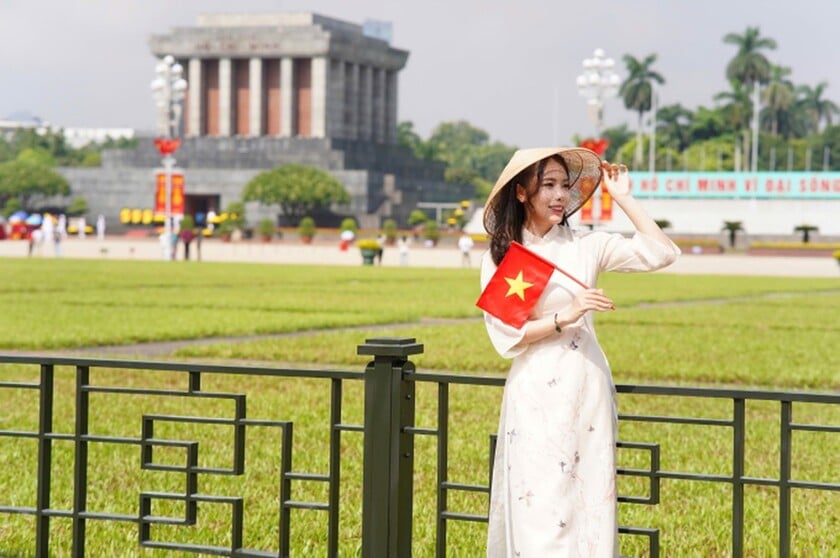
National pride is also shown through the way Vietnamese people preserve and promote the value of the ao dai.
National pride is also expressed through the way Vietnamese people preserve and promote the value of the ao dai. Although there are many variations, the core of the ao dai is still maintained: long, flowing skirts, modesty and elegance. Designer Si Hoang, one of the pioneers in the innovation of the ao dai, once said: "Designing the ao dai is to honor the true value of the ao dai, but still close to the times."
The mission of the young generation in preserving the ao dai
In addition to wearing Ao Dai, many young people also participate in research projects and restoration of traditional costumes to better understand the history of Vietnamese costumes. Culture-loving groups such as "Dinh Lang Viet", "Vietnam Centre" or young designers have been and are contributing to promoting Ao Dai and Vietnamese traditional costumes to the world.
"Young people today not only wear ao dai but also understand it and research it. This is a good sign, because only when we deeply understand something can we preserve and develop it properly," MC Tung Leo shared.
Not only limited to the domestic market, Vietnamese Ao Dai is increasingly appearing on international fashion runways, becoming a source of pride when being welcomed by international friends. Designs inspired by Ao Dai have been included in the collections of major fashion houses such as Chanel and Dior, proving the appeal of Vietnamese Ao Dai on the global fashion map.
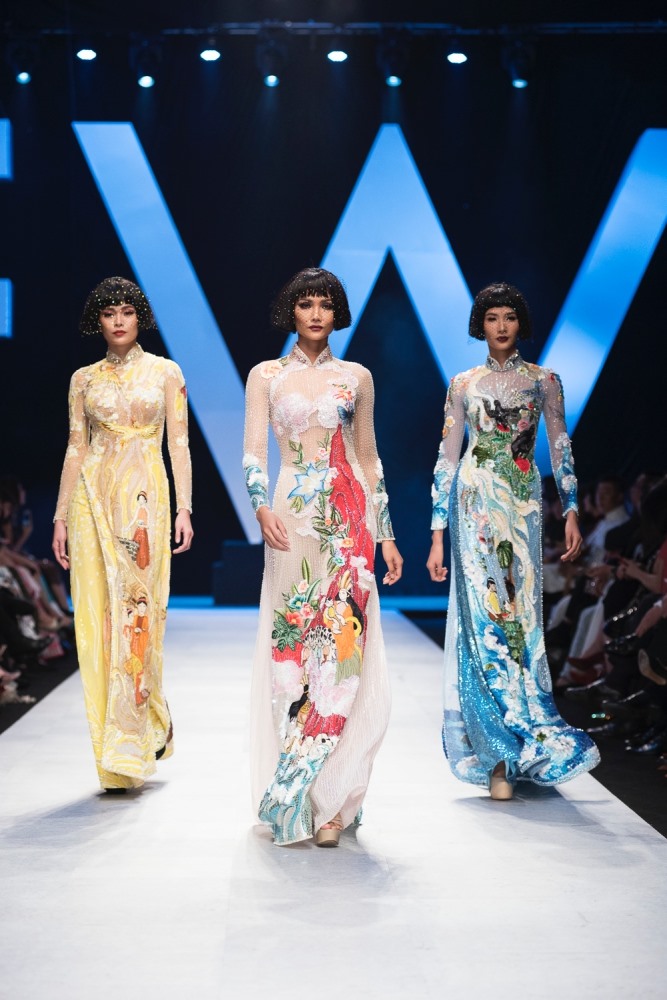
On the basic form of the traditional ao dai, designer Nguyen Cong Tri meticulously hand-sewn each flower petal and each sparkling bead in the collection "Beloved Coco"
The Ao Dai is not just a costume, but also a story about history, culture and national spirit. Preserving the Ao Dai does not mean framing it in the past, but bringing it closer to the present and the future. As MC Tung Leo said, "Preserving the Ao Dai is not difficult, but designing a real Ao Dai is very difficult. Don't just stop at wearing the Ao Dai, understand and appreciate its value."
The Vietnamese Ao Dai has been, is and will always be a symbol of traditional beauty, national pride and endless creativity. And as long as the Ao Dai still flutters in the streets, the spirit of the homeland remains intact in every step of the Vietnamese people.






